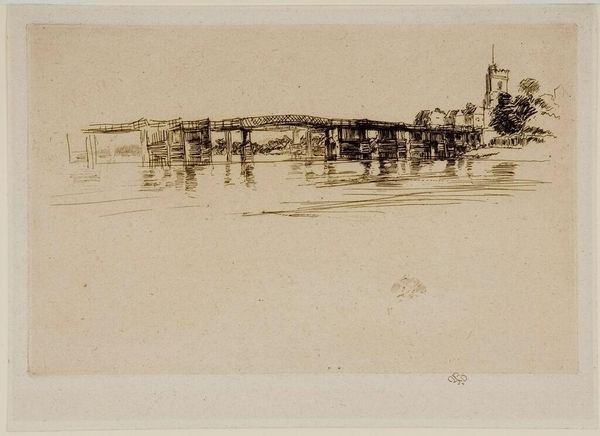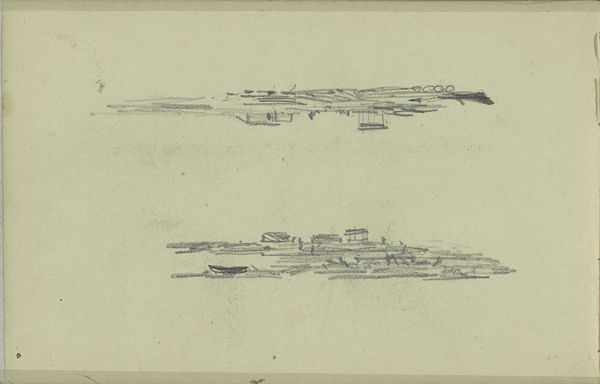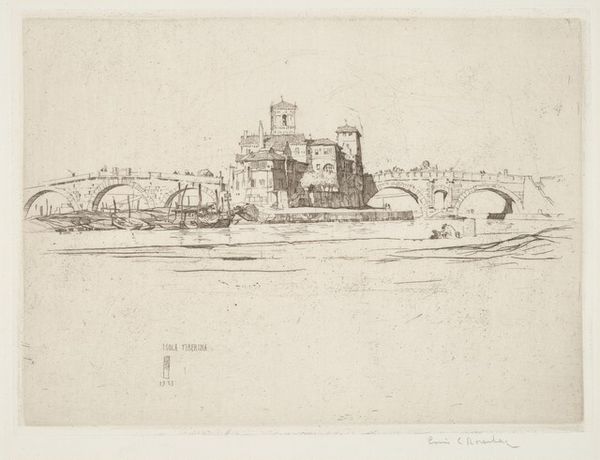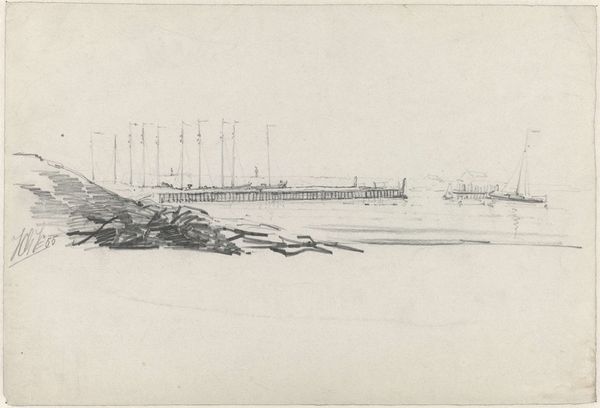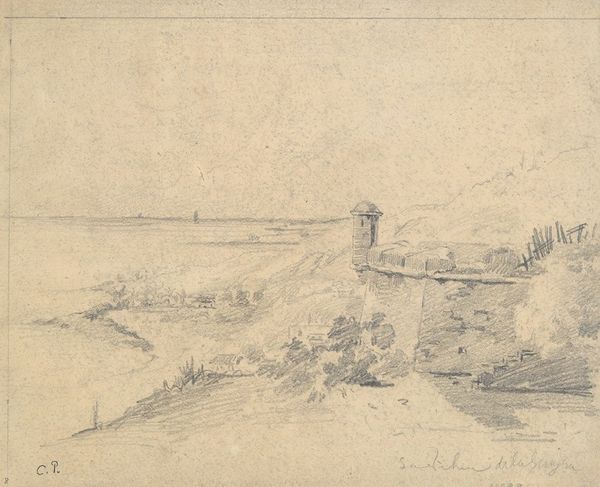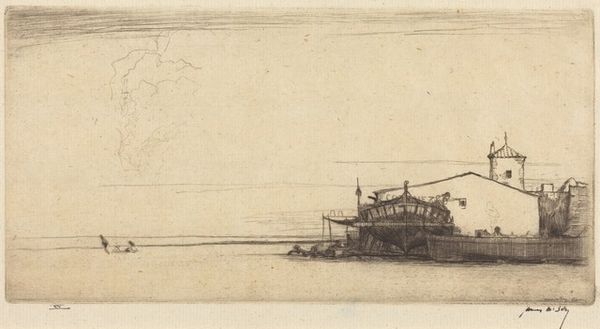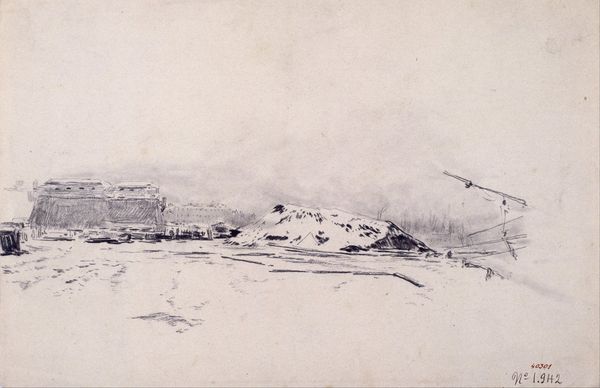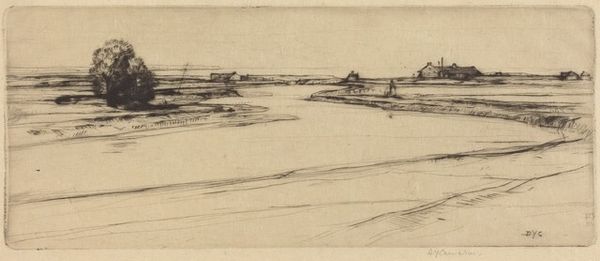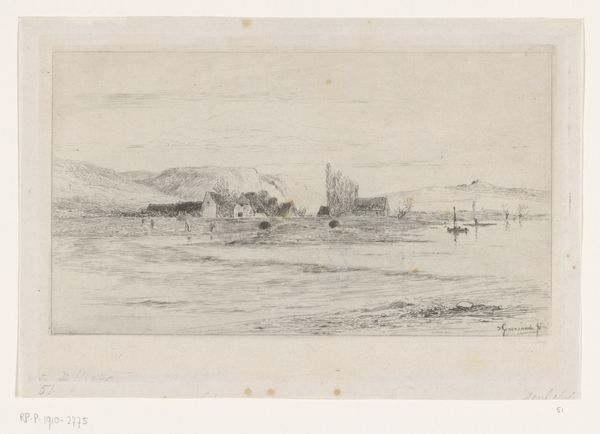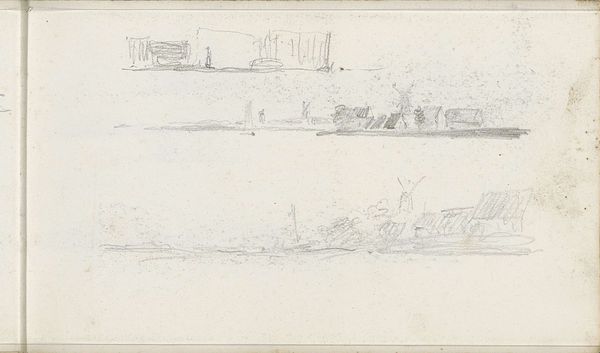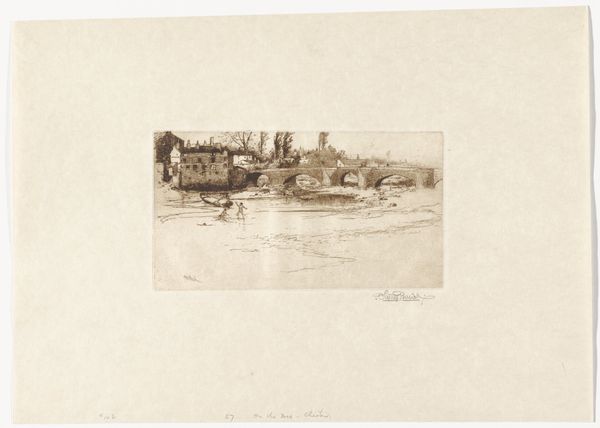
Copyright: National Gallery of Art: CC0 1.0
Editor: This is David Young Cameron's "Lunan Bay," an etching from 1911. There's a striking stillness to this landscape, a quiet drama. How do you interpret this work? Curator: The scene whispers of the precarious relationship between humanity and nature, doesn’t it? Etchings like this, particularly those capturing landscapes, often romanticize rural life while subtly acknowledging the social and economic transformations occurring. Consider the depopulation of rural areas during this time, driven by industrialization. How does the artist frame that narrative, if at all? Editor: I hadn’t considered that aspect. The figures are so small, almost swallowed by the landscape. Perhaps they symbolize the individual's vulnerability in the face of larger forces? Curator: Precisely. Think about the compositional choices. The low horizon line, the vast expanse of the bay— what effect does that create for the viewer? Does it amplify or diminish our perception of the buildings? How do elements like the boats contribute to this story? Are they symbols of trade and connection, or evidence of reliance and struggle? Editor: I see your point. The muted tones almost seem to neutralize the scene, avoiding stark judgements. It prompts reflection more than anything else. Curator: It allows for multiple readings. It asks us to examine the layered realities of a place—the beauty, the history, and the social complexities woven into it. It also encourages a deeper look into our own contemporary understanding of rural communities, displacement, and the ongoing dialogues surrounding land, ownership, and identity. Editor: That’s a very insightful way to look at it. I now have a greater appreciation for how art can reflect complex societal issues. Curator: Absolutely. Art acts as a mirror, reflecting not just what we see but also prompting us to examine who we are and what narratives shape our world.
Comments
No comments
Be the first to comment and join the conversation on the ultimate creative platform.

